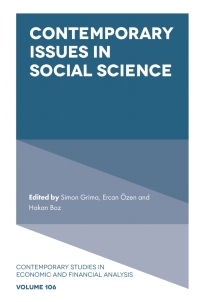

FACTS GRANT DATE 1/1/10 1/1/12 GRANT DATE FAIR VALUE 6 4 VESTING PERIOD (YEARS) 3 3 VESTING DATE 1/1/13 1/1/15 ORIGINAL AWARD MODIFIED AWARD 1] Account for the original award and the modified award independently. Such that the original remaining unvestedcompensation cost will be accounted for under the original vesting terms and the incremental compensation cost related to the modified award will be recognized from the date of the modification to the end of the extended service period. DO ALL CALCULATIONS IN THE SPREADSHEET 2012 2013 2014 YEAR ENDED ORIGINAL AWARD MODIFIED AWARD TOTAL COMPENSATION 2] Combine the original award and the modified award on the basis that the remaining unvested compensation cost from the original award and incremental compensation from the new award should be accounted for together over the modified remaining service period. DO ALL CALCULATIONS IN THE SPREADSHEET 2012 2013 2014 YEAR ENDED TOTAL COMPENSATION Case 07-4 Murray Compensation, Inc. Murray Compensation, Inc. (Murray), an SEC registrant that provides payroll processing and benefit administration services to other companies, granted 100,000 at-the-money" employee share options on January 1, 2010. The awards have a grant-date fair value of $6, vest at the end of the third year of service (cliff-vesting), and have an exercise price of $21. Subsequent to the awards being granted, the stock price has fallen significantly. On January 1, 2012, Murray decreased the exercise price on the stock options to $12. This downward adjustment to the exercise price was made in order to ensure that the options continue to provide intended motivational benefit to employees. However, in addition to the reduction in the exercise price, Murray also changed the vesting terms, such that the employees must provide an additional two years of service (awards will now vest on January 1, 2015). Immediately prior to the reduction in the exercise price of the awards, the fair value was $1 per award. After considering the impact of the January 1, 2012, re-pricing, the fair value was $4 per award. FACTS GRANT DATE 1/1/10 1/1/12 GRANT DATE FAIR VALUE 6 4 VESTING PERIOD (YEARS) 3 3 VESTING DATE 1/1/13 1/1/15 ORIGINAL AWARD MODIFIED AWARD 1] Account for the original award and the modified award independently. Such that the original remaining unvestedcompensation cost will be accounted for under the original vesting terms and the incremental compensation cost related to the modified award will be recognized from the date of the modification to the end of the extended service period. DO ALL CALCULATIONS IN THE SPREADSHEET 2012 2013 2014 YEAR ENDED ORIGINAL AWARD MODIFIED AWARD TOTAL COMPENSATION 2] Combine the original award and the modified award on the basis that the remaining unvested compensation cost from the original award and incremental compensation from the new award should be accounted for together over the modified remaining service period. DO ALL CALCULATIONS IN THE SPREADSHEET 2012 2013 2014 YEAR ENDED TOTAL COMPENSATION Case 07-4 Murray Compensation, Inc. Murray Compensation, Inc. (Murray), an SEC registrant that provides payroll processing and benefit administration services to other companies, granted 100,000 at-the-money" employee share options on January 1, 2010. The awards have a grant-date fair value of $6, vest at the end of the third year of service (cliff-vesting), and have an exercise price of $21. Subsequent to the awards being granted, the stock price has fallen significantly. On January 1, 2012, Murray decreased the exercise price on the stock options to $12. This downward adjustment to the exercise price was made in order to ensure that the options continue to provide intended motivational benefit to employees. However, in addition to the reduction in the exercise price, Murray also changed the vesting terms, such that the employees must provide an additional two years of service (awards will now vest on January 1, 2015). Immediately prior to the reduction in the exercise price of the awards, the fair value was $1 per award. After considering the impact of the January 1, 2012, re-pricing, the fair value was $4 per award








